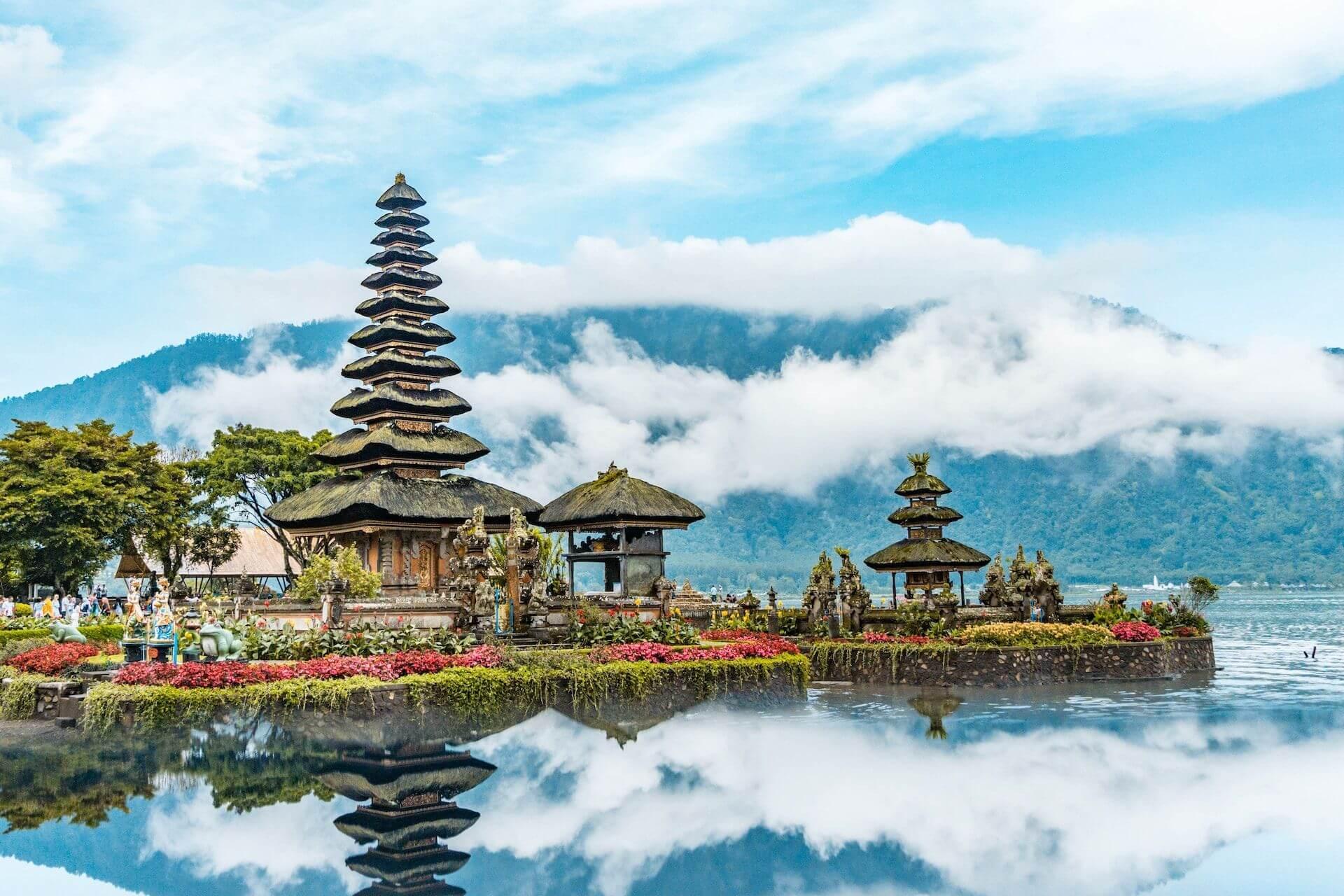This small Indonesian island, located in the Indian Ocean between Java and Lombok, has turned into a travel hit over the last two decades. But Bali is not a classic beach destination, it is mainly its distinctive culture, ancient temples and beautiful nature that attracts people here. This is where an incredible variety of natural treasures come together, both on land and in the water – volcanoes, lakes, jungles, waterfalls, corals and rich underwater life. Do you want to know how to escape the tourist fever and see something more than just the instagrammers' favourite spots?
Balinese temples are home to vibrant traditions
Indonesia is the largest country in terms of population and one of the most peaceful Muslim countries in the world. Hinduism is predominant in Bali, but it has its own specificities compared to, for example, India or Sri Lanka. It is probably the difference in religion that accounts for the relaxed atmosphere. A wonderful characteristic of all Indonesians is friendliness. The locals are open-minded, happy to talk to strangers and exude hospitality. And last but not least, it's safe here.
The unique culture here is unparalleled in the world and makes Bali more colourful than the rest of Indonesia. Traditions are still alive here, sacrifices are made to Hindu deities in ancient temples, and almost every day has a festival accompanied by ceremonies full of colour, dance and merriment. When travelling around Bali, there is a good chance that you will come across a festival, for example, when visiting temples, and often dances are held during the full moon. As a back-up option, visit one of the regular dance performances in Ubud, although they don't have as authentic an atmosphere and are a bit lengthy.
Amed – peaceful northeast
Although Bali has a reputation as a "famous" destination, it is mainly the south of the island around the airport that is the busiest tourist destination. It's a big urban area, giant hotel complexes, bars and discos have sprung up, and surfers also like to head here for the waves. Northeast Bali is the exact opposite of the south – a leisurely pace of life, calm seas with abundant underwater life and no discos. Most locals still fish for a living. Thousands of small boats with sails set off from the coast every morning, fishing in the traditional way with rods and nets. When they return with their catch, the whole sea is covered with colourful sails. The centre of the north-eastern coast is the town of Amed, where there are a few small, beautiful beaches where you are often all alone. There is a nice beach in the village of Lipah and also Selang beach, which are close to the hotels. The volcanic sand here is bursting with colour and the abundance of coral reefs makes it a promising place for snorkelling and diving.
Although the most famous walks around the rice paddies are around the town of Ubud, it's a bit of a tourist trap as everywhere else is just as photogenic and beautiful. In the northeast, the remote Bangle Valley is worth a hike, with picturesque Balinese villages surrounded by terraced rice paddies. In grass huts, the older generation lives a hitherto traditional life.
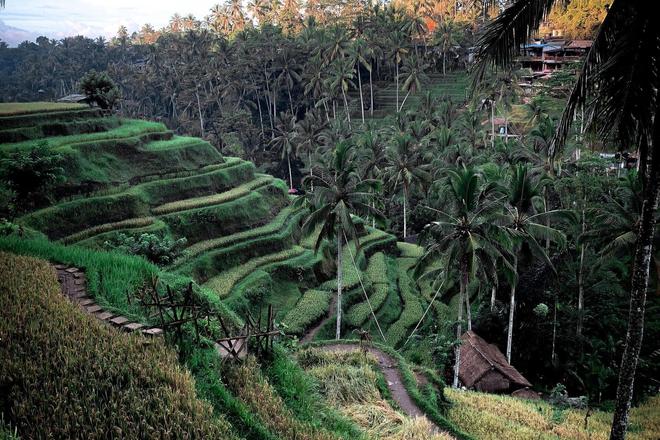
In the hills south of Amedu stands the Lempuyang Temple, nicknamed the Gateway to Heaven, which is a special place in Bali. Sadly, gone are the days of being alone in the middle of the jungle in a stunning temple. The temple was discovered by tourists in recent years, but they often head here just to snap an Instagram photo at the iconic entrance gate, which often has a queue of around three hours. For the essence of the place, you need to go further than the first temple. From the entrance gate, 1,700 steps lead through the jungle and past other temples to the top of the eponymous mountain (1,060m), where the views are spectacular. There, fortunately, one meets very few people.
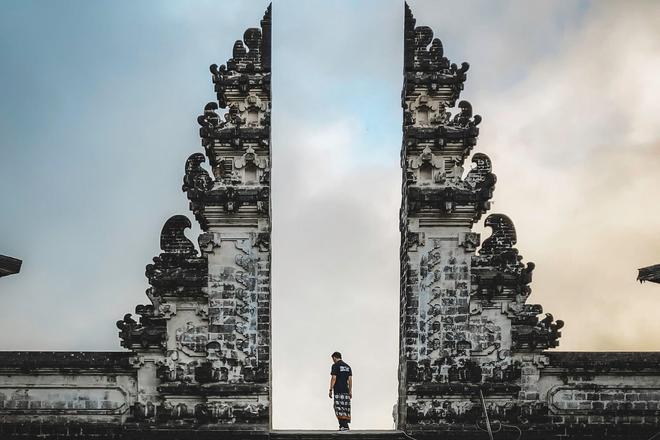
Sunken wrecks and swimming with mantas
Indonesia is renowned for having the greatest biodiversity of plant and animal species in the world, both on land and especially in the underwater world. Amed in northeast Bali, where a dive centre was established more than 20 years ago, is considered one of the best dive sites in Asia. Diving here is safe due to the calm seas and the sites are very diverse. You can spot sea turtles, reef sharks that are not dangerous to humans, and larger fish species such as the azure-coloured flatfish, yellow-striped grunts, flat batfish and more. In addition to the abundant underwater life, there is the interesting wreck of the 120-metre-long Liberty, which sank about 20 metres below the surface. Another small wreck is located a short distance from the resort of Selang amongst huge corals with lots of small colourful fish just one to five metres below the surface. Thanks to the rocky substrate and the many reefs, the corals are close to the shore and can be observed even when snorkelling. Dives here are also taken in shallow water, making them suitable for beginners who want to try diving for the first time. You can also take a three-day diving course here.
To the southeast of Bali lies the island of Nusa Penida, surrounded by coral reefs, which is increasingly visited by people for its photogenic reefs and wild beaches. Due to strong currents and large waves, diving here is only suitable for experienced divers. People from all over the world come here to see the moonfish, the largest fish in the world (sharks are classed as cartilaginous fishes). Moonfish have flattened bodies up to six metres high and weigh around two tonnes. They are prehistoric fish and look a bit like a dinosaur underwater. They live at depths of 20 metres and are most easily seen in Bali from August to October. An amazing experience for both snorkelers and beginner divers is swimming with the giant manta rays, which can be found at one site off Nusa Penida Island almost every time.
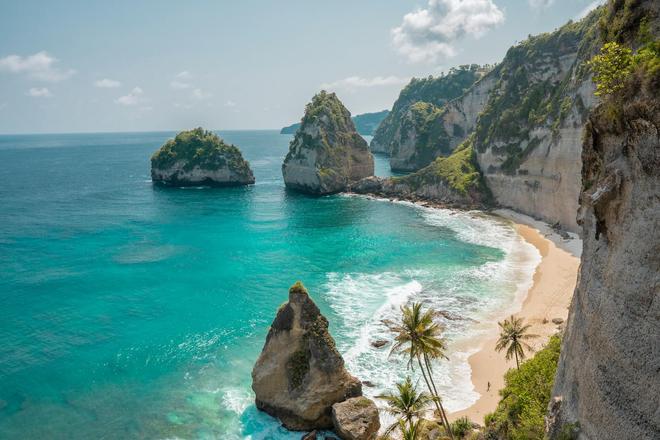
Bukit and Gili – the best places for a quiet beach
The Bukit peninsula in the very south of Bali is lined with photogenic steep cliffs, but there are also some quieter long beaches with white fine sand. Getting to them is a bit of a longer journey, as you have to walk for half an hour down several hundred steps, but it's definitely worth the effort. We recommend the more secluded Nyang Nyang beach in southwest Bukit, just south of the popular Uluwatu Temple. However, be prepared not to swim much in the south due to the large waves.
To the east of Bali off the coast of Lombok lies a trio of small beach islands called Gili. The nightlife is a bit more lively on Gili Trawangan, the other two are absolutely peaceful, suitable for lounging and relaxing. Connecting here is relatively easy, the shortest way is by fast boat from Amed. Completely deserted beaches then hide the islet of Menjagan in the national park in the northwest of Bali, where you can only go for a day trip.
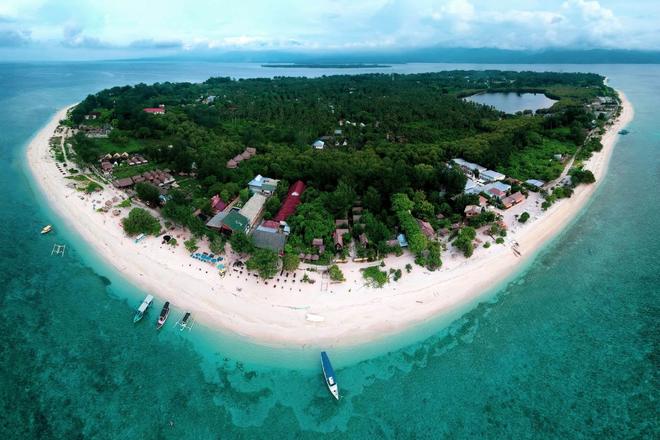
Jungle with waterfalls at Lake Bratan
Inland, the area around Lake Bratan is worth a visit not only from a natural point of view, on the shores of which stands one of the most famous and most photographed temples in Bali – Ulun Danu Bratan, set in the beautiful scenery of the surrounding hills. To avoid the crowds, it's a good idea to take a siesta and head to the temple first thing in the morning. The local botanical garden full of tropical plant species is a pleasant place to stroll, as are the surroundings of the neighbouring two lakes Buyan and Tamblingan, on the banks of which stand a number of other small temples in the middle of the jungle. A short distance west of the lakes, the lush rainforest near the mountain village of Munduk hides several magnificent waterfalls. To the north of Lake Bratan we find more beautiful waterfalls near the village of Sekumpul, which are "newly" discovered by tourists. The valley with seven different waterfalls is reached by several hundred steps.
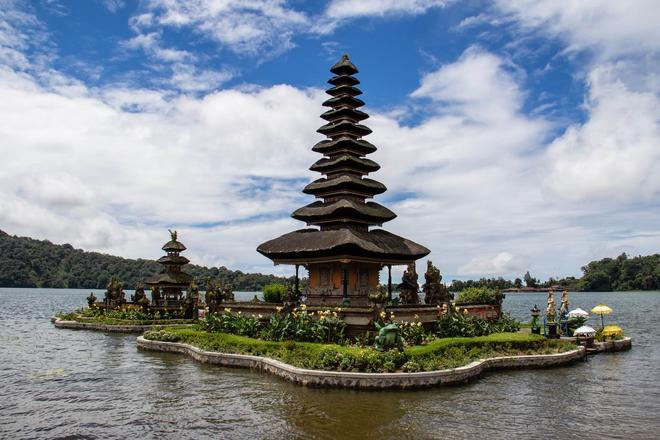
Temples on land and water
In addition to the aforementioned Lempuyang Temple, visit Gunung Kawi, nicknamed the Rock Temple, which is unknown to many people. The monumental temple complex stands near the village of Tampaksiring halfway between Ubud and the Batur volcano. Carved into the rock face here are the thousand-year-old tombs of kings and queens. The temple is reached by descending several hundred steps past rice paddies and several small waterfalls to the bottom of the rocky Pakrisan River valley. All you need is a giant ball and you will find yourself in the backdrop of an Indiana Jones movie! Just a short distance away is the temple and the Tirta Empul spa, which is very popular with tourists and Balinese alike. It is one of the most sacred places in Balinese Hinduism, with long queues of believers and tourists waiting to soak up the healing springs that are said to purify the body and spirit. But even when trekking through remote villages, one can discover small, secluded temples in rice paddies or in the jungle that have their own special charm.
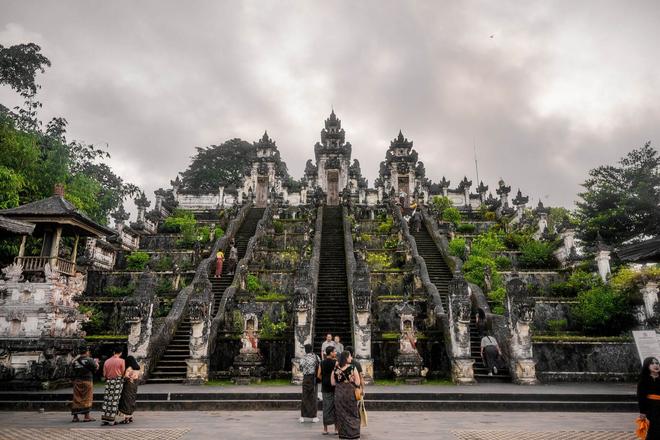
Unique to Bali are the so-called water temples. Some of them stand directly in the sea or on the lake, others are surrounded by ponds and fountains. Two of the most famous temples in the south of Bali are the ones that everyone will visit: the Tanah Lot standing on an island in the sea and the Uluwatu on the impressive cliffs of the Bukit peninsula. Most tourists head here for sunset, when in addition there is a fire dance show, so for a more leisurely visit we recommend opting for the morning. Lesser-known temples include the Tirta Gangga Water Gardens in east Bali, a pleasant park with fountains and pagodas where you can walk on "floating" stones, and a little further south on the coast, the Ujung Water Palace, standing in the middle of an artificial lake.
For views of the Batur volcano
An easy hike of about an hour, with 600 metres of elevation gain, leads to Batur Volcano (1717m) in the east of the island. The entire crater can be circumnavigated, and beautiful views open up from the summit to the caldera with its eponymous lake and dramatic lava field scenery. Everyone heads to the top at sunrise, where you need a guide, so we would recommend climbing up during the day when there is usually no one there. The highest volcano on the island, Gunung Agung, which is over 3,000 metres high, has also been climbed in the past. However, it has been active for the last two years and is now off limits.
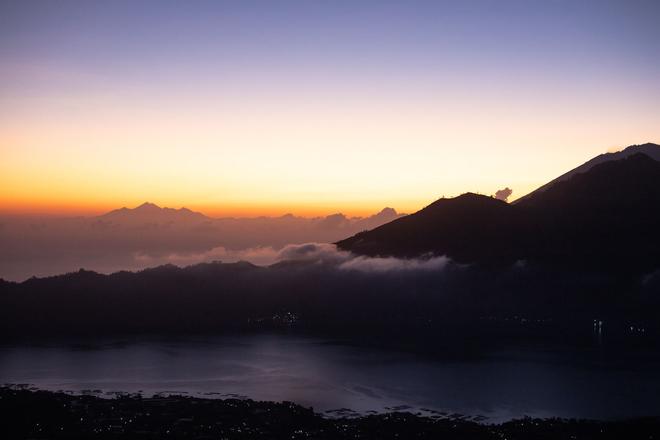
A short trip to neighbouring Java to the sulphur volcano Ijen (2,799 m) is one of the experiences of a lifetime. Traditionally, sulphur is still mined here, with workers hauling it on their shoulders in hundred-pound baskets. Sulphuric fumes can be smelled everywhere, and in the crater lies an azure lake of sulphuric acid – the world's most acidic lake, which burns with blue flames when it occasionally ignites on its own. For the more adventurous, a three-day camping trip to Rinjani Volcano (3,726m) in Lombok is a good idea.
Surfing in the south
Bali is one of the top ten destinations for surfers – there's surfing all year round, and everyone can choose an area to suit them. For beginners, Kuta Beach near the airport south of the capital Denpasar is a good choice, as it has a sandy base. The waves there come from both the left and right side, so it is suitable for right and left-handed people. The Bukit peninsula is especially famous among surfers, where there are more challenging locations with bigger waves.
Hire a taxi
Although the island is relatively small, transport here is not exactly easy. Ideally, choose two or three places as a starting point and take trips around the island from there. The traffic here is quite wild, public transport doesn't work very well, and hiring your own car or motorbike is only for the hardened and experienced. We recommend taking a taxi and negotiating a reasonable price. Just beware of tourist traps where the driver stops at a business of some sort and then gets a commission for your spending. Typical is buying the famous civet coffee (kopi luwak) and other souvenirs.
Taste the fish with coconut
A typically Balinese dish is the spit-roasted pig babi guling. This is, of course, a Balinese speciality, as pork is not eaten in otherwise Muslim Indonesia. We would recommend trying the fish and fresh seafood, which is served grilled. A local speciality is fish skewers with coconut – sate lilit ikan. Otherwise, Balinese cuisine is not that different from Indonesian cuisine, which is typically rice, noodles and lots of vegetables. Harder to find in Bali – because Hindus, on the other hand, don't eat beef – is the excellent Indonesian dish rendang – beef in a spicy brown coconut sauce, which we recommend trying. And what never disappoints and never gets old is the traditional fried rice nasi goreng, which can be found on every corner.
